Anthurium gracile is a prolific grower that will satisfy any impatient houseplant enthusiast. It is an underrated anthurium that would make a stunning addition to any collection.
This blog post will cover the basics of anthurium gracile care to help you keep your Red Pearl Anthurium thriving! Since this anthurium self-pollinates, you’ll be propagating it in no time.
This post includes a visual mini-propagation tutorial to guide you through propagating anthurium from seeds. Read on!
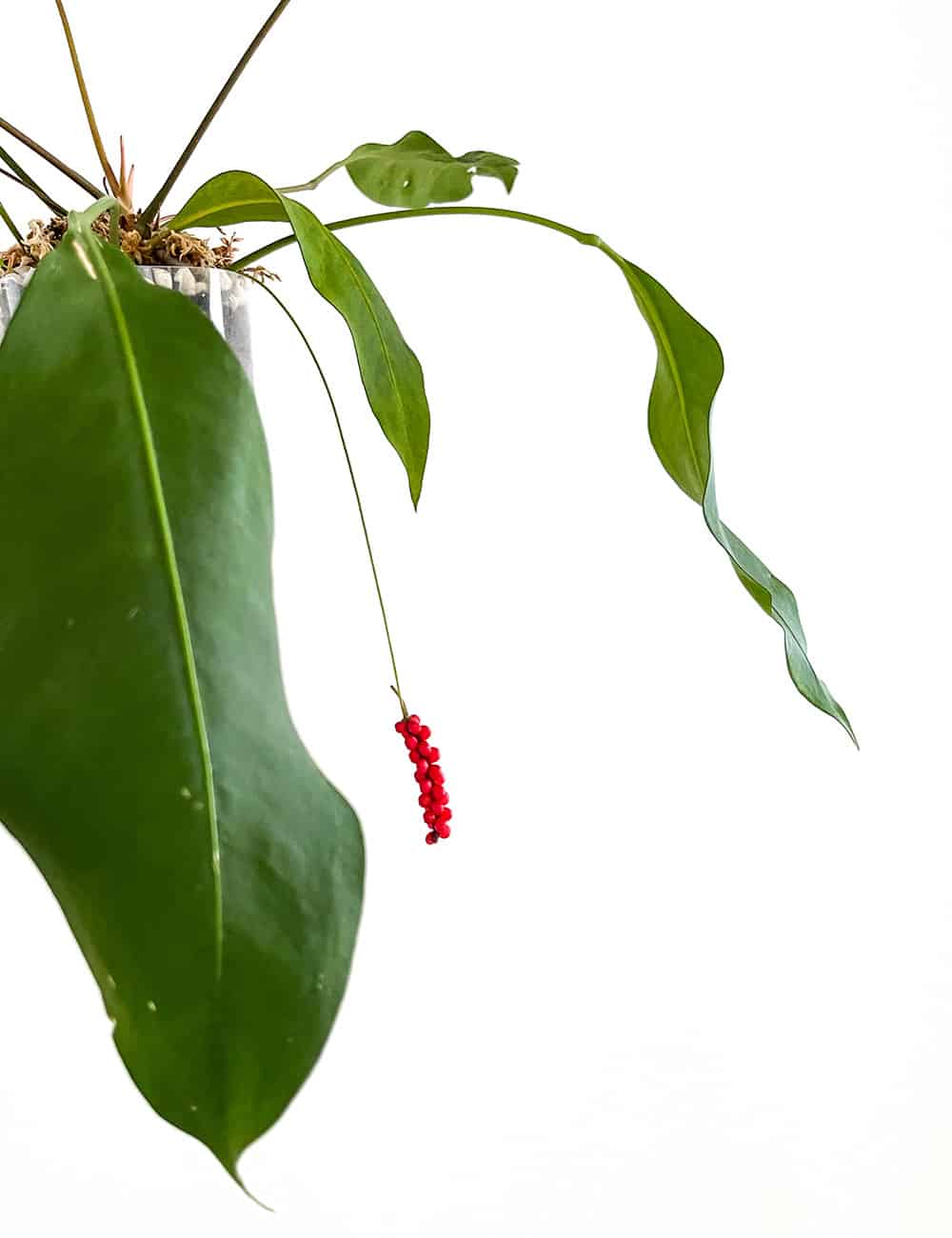
About Anthurium Gracile
Anthurium gracile is an epiphyte native to the tropical rainforests of Guatemala, Belize, Brazil, and Peru. It is also known as ‘Red Pearl Anthurium’ due to its characteristic red berries that look like a string of pearls.
The leaves are dark green and elongated with a leathery feel. The bright red berries contrast with the intense dark green leaves. It has distinctive white fleshy roots that grow exposed on tree trunks of tropical rainforest.
It looks magnificent when mounted on a wooden board allowing the roots to hang down freely. The only caveat is in providing them with enough moisture to thrive. My ultimate goal with this anthurium is to transition it from an aroid mix to a plank and mount it on a wall.

Aroid collectors often overlook Anthurium gracile as it doesn’t have such majestic-looking leaves as Anthurium magnificum, regale, or veitchii. But I beg to differ! I took a chance on it as it was affordable ($20), and it was one of my best decisions. That plant gave me so much joy. It is a prolific grower that rewards with many inflorescences and self-pollinates! Anthurium gracile is the perfect plant for beginners.
If you’re into collecting strap leaf anthuriums, consider adding Anthurium gracile to your collection. While it is not technically a strap leaf aroid, its long leaves resemble one such as Anthurium vittarifolium.

A Guide to Anthurium Gracile Care
Anthurium gracile is an epiphyte that grows on a host plant, but unlike a parasite, it does not harm the host. It attaches itself to the trunk of a tropical rainforest tree through its white fleshy epiphytic roots and relies on nutrients from the air, rain, and plant debris that fall onto it.
While replicating the rainforest environment where Anthurium gracile grows in nature is not possible for most of us, knowing where it came from provides ample clues to its growing needs.
POTTING MIX
In average indoor conditions, humidity levels will not be sufficient to grow Anthurium gracile exposed on a piece of wood with its roots bare. For now, I use my general chunky aroid potting mix and add a layer of moist sphagnum moss on top of the ‘soil’ to encourage new root growth and cover some of the roots to add extra moisture.

Do not use heavy, all-purpose soil with any of your anthuriums. That’s a recipe for suffocating the roots and killing your plant. For a more in-depth discussion on the right potting mix for epiphytic anthuriums, check out my Anthurium veitchii blog, where I detail how to create your own potting mix.
HUMIDITY
In general, anthuriums require a high humidity level to thrive, which is definitely the case with Anthurium gracile. In its natural environment, humidity levels are extremely high. While you may not be able to match those conditions in your indoor environment, you can help by placing it close to the humidifier.
Humidity is especially important for epiphytic anthuriums as it stimulates aerial root growth. I live in a tropical country but run air conditioning all the time. My humidity levels are about 50-55% on average. But when AC is turned off, the ambient humidity rises to 70-80%.
When I was away for 3 weeks, and the air conditioning was not running, I saw a massive difference in aerial root growth upon return. This was especially noticeable on my philodendrons, most on Philodendron atabapoense which grew its aerial roots from 3 to 30cm in length over the period of 3 weeks! But all plants loved higher humidity.
LIGHT
Since it is an epiphyte that grows above the ground level, closer to the rainforest canopy, it can be inferred that it likes more light than a terrestrial type of anthurium, such as crystallinum or magnificum.
Provide your Anthurium gracile with very bright indirect light and it will thank you by pushing out new leaves and inflorescences. I grow mine under a grow light, and it seems to enjoy the extra light based on its growth spurt.
WATER
Given that my aroid mix for epiphytic anthuriums is chunkier than for the terrestrial types of anthuriums, the watering frequency is increased. I often put Anthurium gracile under the shower to thoroughly soak the leaves and potting medium. This is a great pest prevention routine as it washes out potential invaders.
FERTILIZER
Thorough and frequent watering calls for more fertilizer as it flushes out faster than in a dense potting mix. Anthurium gracile also constantly pushes inflorescences, which drains the plant’s energy. I use liquid fertilizer in all my waterings all year round. Plants need food all year long, and I don’t believe in stopping fertilization in winter.
For a deeper discussion on how to care for epiphytic anthuriums indoors, check out my Anthurium warocqueanum blog.
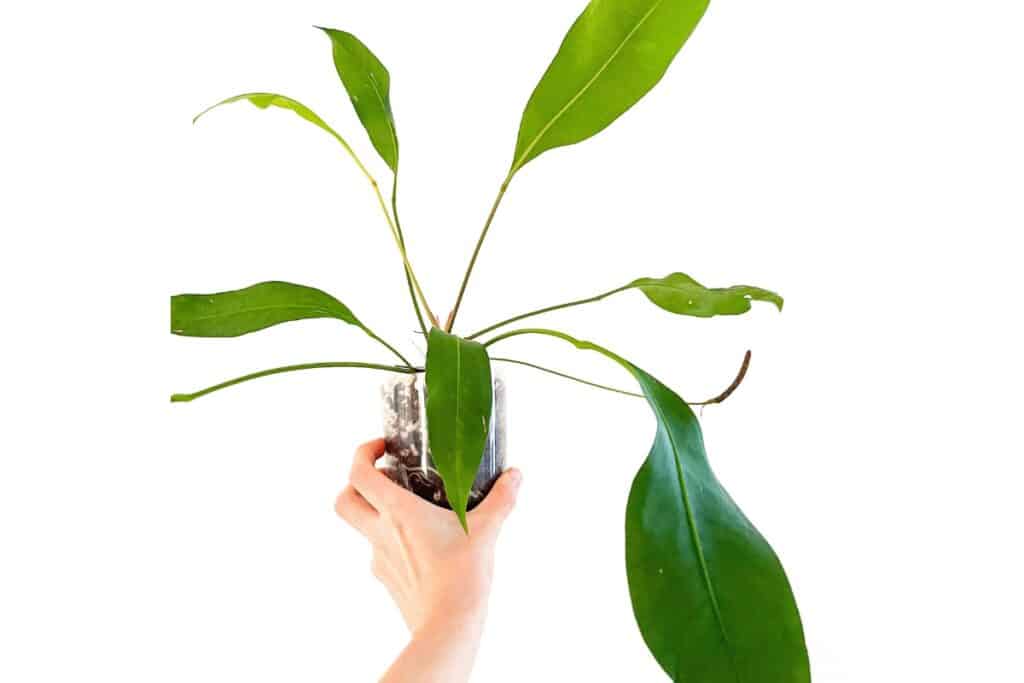
Anthurium Gracile Propagation
Arguably the most rewarding propagation method for a plant hobbyist is through pollination. This allows for the enjoyment and satisfaction of growing a plant through all stages of growth, from pollination, a harvest of ripe berries, seed germination, seedling stage, juvenile plant, and a mature specimen.
Anthurium gracile belongs to a tiny section Leptanthurium, which according to information published by the International Aroid Society, contains only one species of Anthurium. Although cross-section pollination has been known to occur within Anthurium species, you need to pollinate with pollen from the same species or species within the same section to ensure successful anthurium pollination.
It doesn’t apply to Anthurium gracile, though, which self-pollinates.

Anthurium gracile is a prolific grower that pushes multiple inflorescences at the same time that hang underneath the leaves. To easily tell whether you have a new leaf or new inflorescence emerging, check where it originates. An inflorescence will always come from the leaf petiole, whereas a new leaf will come from the plant’s stem.
It looks great attached only to a tree bark exposing the white fleshy roots, contrasting with dark green strap leaves and intensely red berries. But keeping the roots humid will always be challenging in indoor conditions.
ANTHURIUM GRACILE INFLORESCENCE
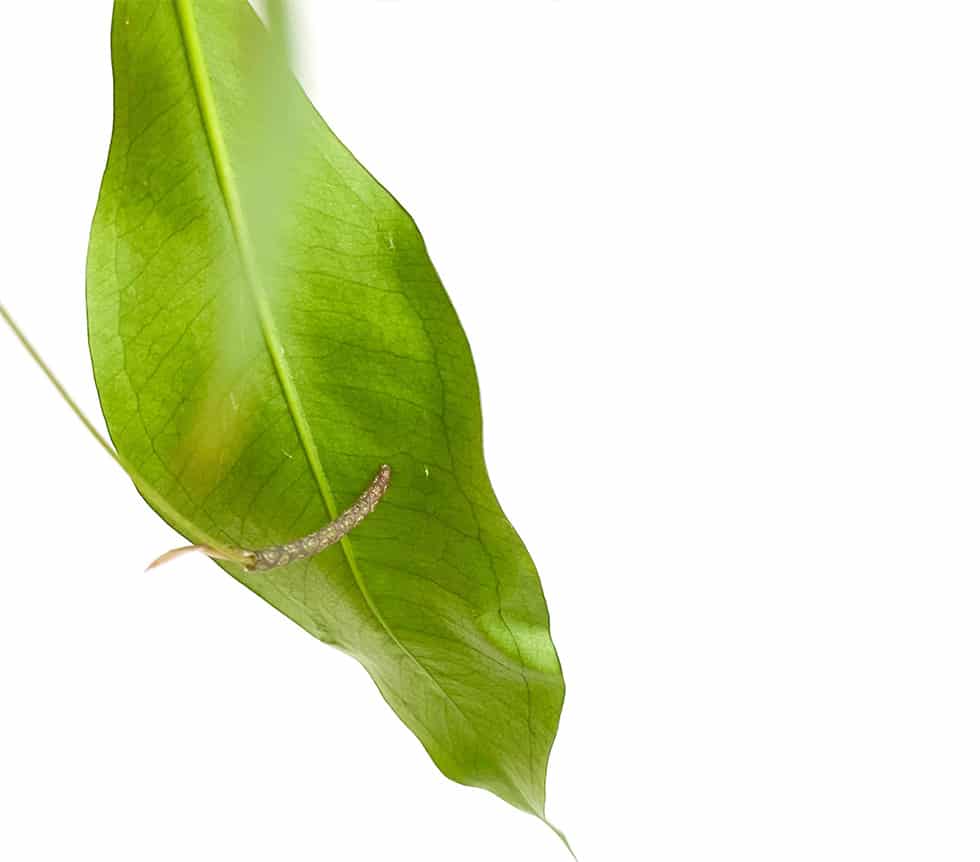


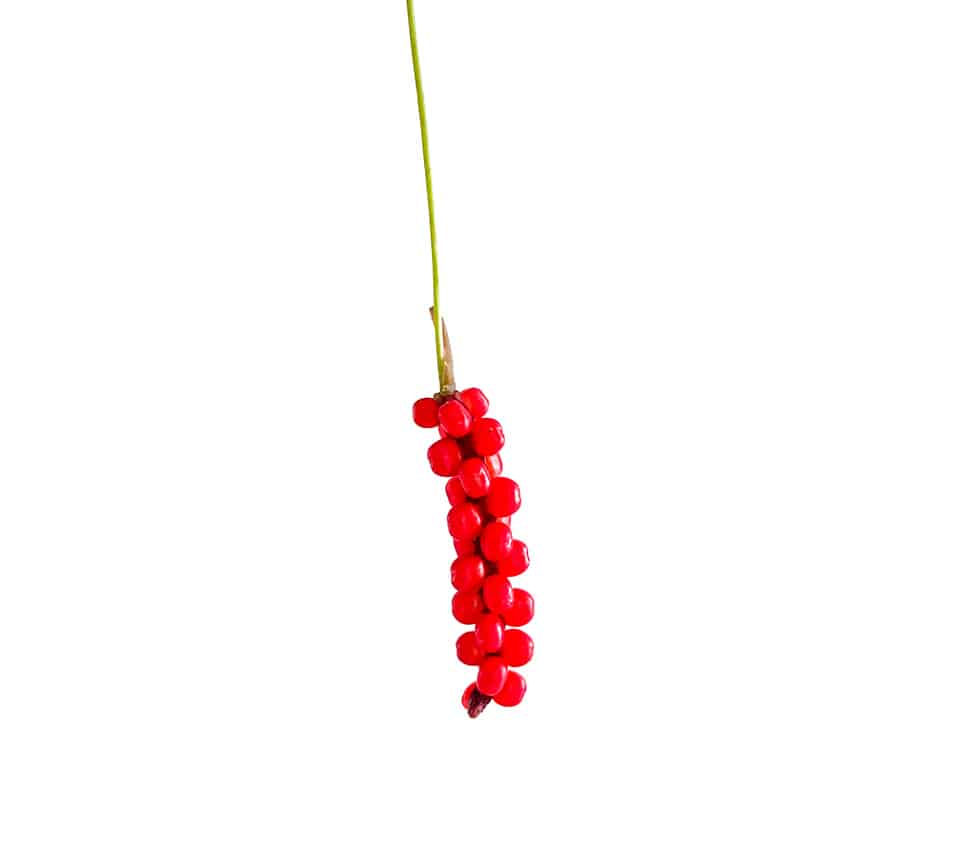
HOW TO PROPAGATE ANTHURIUM FROM SEEDS
Anthurium gracile self-pollinates, so there is no need to aid the process. All you need to do is wait for the berries to ripen. Unlike other Anthurium species’ berries which can take close to a year to ripen, the berries on Anthurium gracile will only take about two weeks till they are ready to pick.
01. Remove berries from infructescence
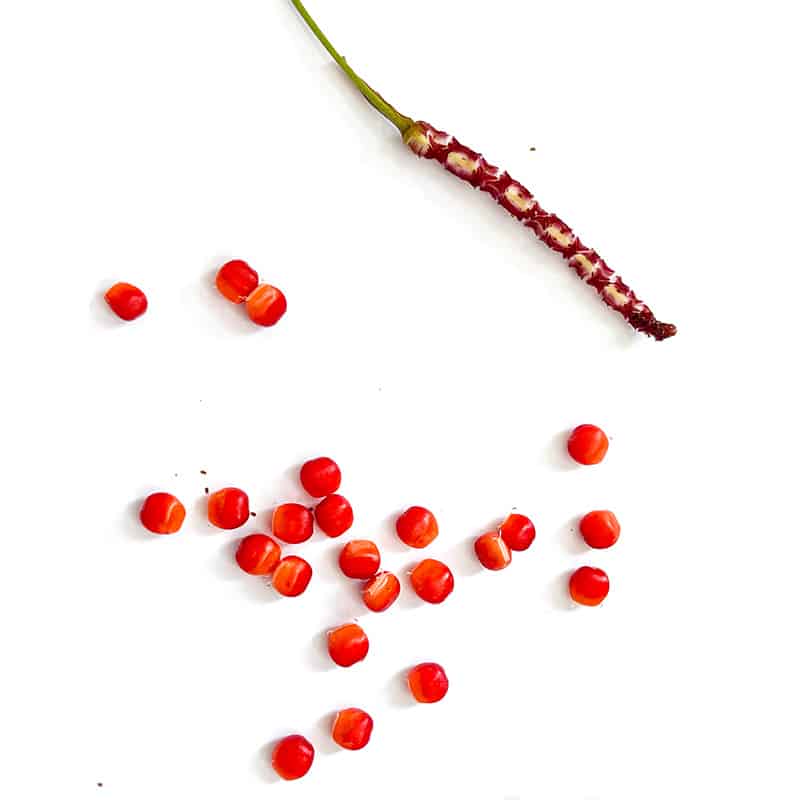
When berries are ready to harvest, it will be very easy to pick them off from the infructescence. Anthurium gracile seeds are covered in a fleshy sticky pulp. Usually, there will be two seeds in each berry.
02. Squeeze seeds from the berries


Squeeze the seeds from each berry on a paper towel removing the red pulp. Put the seeds in water to remove the remaining pulp. If you don’t remove the pulp completely, you are risking rotting the seeds or introducing fungus.
03. Place the seeds on sphagnum moss

I use a plastic container with damp sphagnum moss. Close the container for extra humidity, put it in a warm, well-lit space, and wait until the seeds germinate.
Anthurium Gracile Seedlings
See the growth progress of the Anthurium gracile seedlings over time below. In my experience, you will see tiny root hairs emerging after two days. So far, I have had a perfect germination rate from Anthurium gracile seeds. I remove the cover once the seedlings reach the top or are about 3cm high.




I hope this blog convinced you to give Anthurium gracile a chance. You’ll learn a lot in a short period of time by growing this anthurium.
And if you have any questions, chat with me on Instagram.

